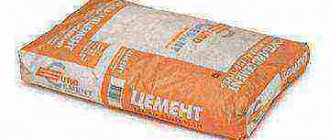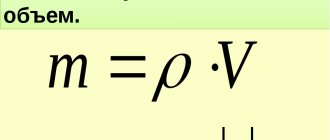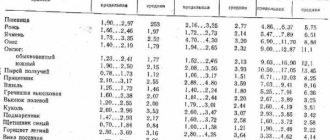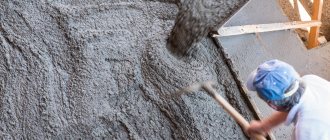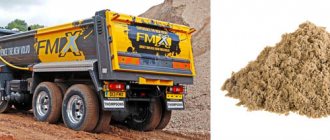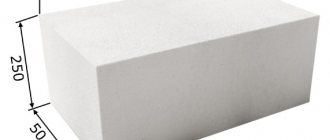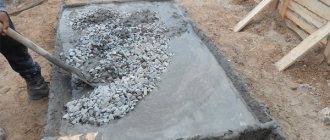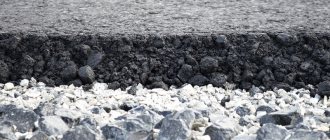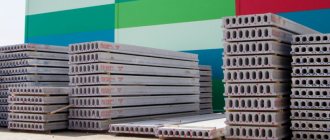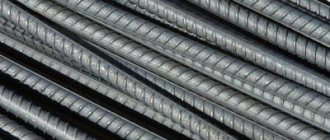Crushed stone (see video) is an integral material for various construction and road works. Crushed fragments of boulders, coarse gravel and other rocks, due to their rough surface, form a strong bond with the cement mortar.
One of the main characteristics of crushed stone is its density, that is, the ratio of mass to volume.
One of the main parameters of this building material is the density of crushed stone, that is, the ratio of mass to volume. It is the density that has a primary influence on many of its other qualities.
Why do you need to know the weight of crushed stone?
To draw up design and estimate documentation, you need to know complete information about the amount of material used, and, accordingly, the cost of purchasing crushed stone, and the amount of work to use it.
Without carefully studying the issue, you can make a mistake with the volume of material, as well as the amount of money spent on delivery. At the same time, understanding the volume of bulk materials allows you to separate a certain amount of space for them.
The information may also be useful in determining the quantity and other auxiliary materials for kneading. Most building materials are sold at , so the cubic capacity of crushed stone must be converted into a general indicator to calculate the amount of resources required.
Accurate data is difficult to determine without access to the material, so indicating the weight, taking measurements, calculations and examinations falls on the manufacturer. Thus, the regulated characteristics of the material can be found in the accompanying documents.
Compaction factor: purpose
The compaction coefficient is a special standard number determined by SNiP and GOST. This value shows how many times crushed stone can be compacted, i.e. reduce its external volume during compaction or transportation. The value is usually 1.05-1.52. According to existing standards, the compaction coefficient can be as follows:
- sand and gravel mixture - 1.2;
- construction sand - 1.15;
- expanded clay - 1.15;
- crushed gravel - 1.1;
- soil - 1.1 (1.4).
An example of determining the compaction coefficient of crushed stone or gravel can be given as follows:
- It can be assumed that the mass density is 1.95 g/cm³; after compaction was carried out, the value became 1.88 g/cm³.
- To determine the value, you need to divide the actual density level by the maximum, which will give a crushed stone compaction coefficient of 1.88/1.95=0.96.
It is necessary to take into account that the design data usually does not indicate the degree of compaction, but the so-called skeleton density, i.e. During calculations, it is necessary to take into account the level of humidity and other parameters of the building mixture.
From the author:
Hello, dear readers! Both before and now, it is quite problematic to imagine construction without the use of crushed stone. This material is widely used in landscape design, construction work and even when laying roads.
As you can see, the range of its application is very wide. Is it possible to compact the soil with crushed stone yourself without hiring a team of workers? Quite, and today we will try to understand the nuances of choosing crushed stone and choosing a compaction method.
Tamping
Naturally, the volume of materials in 1 m3 can vary greatly depending on the density of crushed stone. In addition, it should be noted that during transportation and other actions it is subject to shaking.
That is, the weight of 1 m3 of embankment crushed stone will be significantly less than the weight of a cubic meter of compacted material.
Depending on the material and its fraction, it should be noted that the compaction limit may vary significantly. Approximately, the volume can decrease by 10-20% when compacting with a vibrating plate. Depending on the type of tamper, the weight of 1 m3 should also be taken into account.
The density of crushed stone can increase during prolonged storage in a warehouse, during transportation, intentional compaction, etc. It is possible to reliably determine the weight before and after compaction based on calculations, but in general, weight fluctuations can reach 200 kg/m3, and sometimes higher.
This indicator depends on the breed, the shape of the grains and the amount of impurities.
High-quality crushed stone, which goes through many stages of processing, is least subject to compaction, since the voids in it are already insignificant.
In such cases, the difference in the mass of bulk density and compaction plays a lesser role, on the order of 10-15%.
For example, if granite crushed stone is used, the mass of which is 1500 kg and it is subjected to compaction, then its density will increase, that is, the weight will increase to 1600-1700 kg/m3. This factor should be taken into account when calculating the amount of slag required.
Classification
The weight of 1 m3 of crushed stone depends on several factors:
- The rock from which the stones are obtained; Fraction and flakiness. For construction tasks, a grain size of 5...20 mm is often chosen; for preparatory and other work, larger or finer fractions are used.
Based on their origin, crushed stone is divided into several groups:
Granite is the most durable and in demand, at the same time expensive and durable.
The stones are dense, hollow, and flakiness according to GOST 8267-93 allows no more than 5% of flat grains. As a result, the density of the embankment is maximum. Natural limestone crushed stone is used as a filler for low-strength concrete and for the preparation of lime and its containing materials. Calcium compounds have a relatively small mass, so 1 cube weighs less than granite. Gravel is a product of crushing rock, which is mined during quarrying in the mountains, river beds and reservoirs.
This is a sought-after building material that has optimal characteristics close to granite, but is much cheaper and more common. Slag is crushed stone obtained from the processing of metals. Durable and cheap material with an impressive cube weight. Sandstone is crushed stone from hard rocks, used in general construction work. Slag heap is black crushed stone, a product of the dump of old coal mines. The grains are used in road construction due to contamination.
There are other types of coarse aggregate, but the listed types are mainly used in construction.
The presented types of rocks from which crushed stone is obtained have different characteristics: water absorption, weight, porosity, etc. This is the determining factor in the weight of a cubic meter of material.
Application of material
In industrial construction, granite crushed stone is usually used, which is distinguished by its high strength characteristics. Depending on the type of structure and purpose, it may be more advisable to use lighter and more affordable types of this material.
The main areas of application of crushed stone in construction:
- Concrete solutions for various purposes: from monolithic foundations to the formation of individual foam and gas blocks.
- Road construction: for laying asphalt and paving pedestrian sidewalks. Even when creating an ordinary garden path, this material is used.
- Formation of railway embankments.
- For airport runways.
- Drainage and hydraulic structures.
- Landscape design: creation of decorative embankments and flower beds, design of artificial reservoirs.
As you can see, the use of crushed stone is wide, especially since the variety of shapes and colors allows it to be used even for decorative purposes. The main purpose of this material is to strengthen concrete mortars and is successfully used in home construction.
Concrete made from cement M 400, mixture proportions:
| No.: | Concrete grade: | Volume of concrete, l: | ||||
| Crushed stone, kg: | Sand, kg: | Crushed stone, l: | Sand, l: | |||
| 1. | 100 | 70 | 46 | 61 | 41 | 78 |
| 2. | 150 | 57 | 35 | 50 | 32 | 64 |
| 3. | 200 | 48 | 28 | 42 | 25 | 54 |
| 4. | 250 | 39 | 21 | 34 | 19 | 43 |
| 5. | 300 | 37 | 19 | 32 | 17 | 41 |
| 6. | 400 | 27 | 12 | 24 | 11 | 31 |
| 7. | 450 | 25 | 11 | 22 | 10 | 29 |
Concrete made from cement M 500, mixture proportions:
| No.: | Concrete grade: | Mass composition for 10 kg cement: | Volumetric composition per 10 liters of cement: | Volume of concrete, l: | ||
| Crushed stone, kg: | Sand, kg: | Crushed stone, l: | Sand, l: | |||
| 1. | 100 | 81 | 58 | 71 | 53 | 90 |
| 2. | 150 | 66 | 45 | 58 | 40 | 73 |
| 3. | 200 | 56 | 35 | 49 | 32 | 62 |
| 4. | 250 | 45 | 26 | 39 | 24 | 50 |
| 5. | 300 | 43 | 24 | 37 | 22 | 47 |
| 6. | 400 | 32 | 16 | 28 | 14 | 36 |
| 7. | 450 | 29 | 14 | 25 | 12 | 32 |
The finished concrete composition is distinguished by its strength and durability, in which solid fillers play an important role: sand and crushed stone of various fractions.
Fraction and strength
Parameters such as fraction and strength are also considered important for indicating the quality of crushed stone. The fraction, in other words, the size of crushed stone can be standard, non-standard and European. Crushed stone of the standard fraction has sizes of 5-10, 10-20, 5-20 millimeters, and not the standard fraction of 10-15 and over 15-20 millimeters. European crushed stone has dimensions from 3 to 5 millimeters. The strength of crushed stone can be normal - M 800-1200; high - M 1400-1600; medium - M 600-800; weak - M 300-600 and minimal - M 200.
Physical characteristics and consumption rates
The varieties of this material are not limited to the above three types. There is also a gradation based on rock, quarry and sedimentary rocks, as well as a separate type of crushed stone - processed from waste building materials: brick, concrete or asphalt.
Crushed stone also differs in configuration; if we take into account the method of production from rocks and limestone, the stone will have many sharp edges and plate-like components. On the other hand, if we take into account the production of crushed stone obtained from stones that are constantly in contact with water, the rounded shapes of such material will be more suitable for decorative purposes.
Based on the predominant amount of crushed stone in the mixture, they are distinguished:
- The smallest particles, the average size of which is no more than 5 mm, are eliminated.
- Medium crushed stone with a fraction from 5 to 25 mm.
- Large type of crushed stone, stone size from 25 to 40 mm.
The main thing that you need to find out before purchasing is the fraction of crushed stone, on which the bulk volume and weight will depend. If you need to quickly calculate how much crushed stone to add to the cement mortar, you can use the data in the following table.
Consumption of crushed stone per m³:
| No.: | Fraction size, mm: | Required quantity, kg/m³: |
| 1. | From 0 to 5. | 1500 |
| 2. | From 0 to 40. | 1530 |
| 3. | From 3 to 10. | 1450 |
| 4. | From 5 to 20. | 1370 |
| 5. | From 20 to 40. | 1410 |
| 6. | From 20 to 60. | 1450 |
| 7. | From 20 to 60. | 1480 |
| 8. | From 20 to 90. | 1470 |
| 9. | From 40 to 70. | 1600 |
Such figures are, of course, approximate, just as any company cannot reliably guarantee the uniformity of the sizes of stone particles. This data will help you navigate when forming cement mortars, but there is also a special category - decorative crushed stone, usually used for finishing floors, for example, in the corridors of public places. For such a case, it is necessary to accurately calculate the consumption of crushed stone per quadrature, so the previous table is not useful here.
Consumption of decorative crushed stone per 1 m²:
| No.: | Fraction size, mm: | Bulk mass, kg/l: | Finished layer thickness, mm: | Required quantity, kg: |
| 1. | From 3 to 5 mm. | 1,3 | 20 | 26 |
| 40 — 50 | 65 | |||
| 80 — 100 | 130 | |||
| 2. | From 5 to 10 mm. | 1,4 | 20 | 28 |
| 40 — 50 | 65 | |||
| 80 — 100 | 130 | |||
| 3. | From 10 to 20 mm. | 1,5 | 20 | 30 |
| 40 — 50 | 75 | |||
| 80 — 100 | 150 | |||
| 4. | From 20 to 40 mm. | 1,65 | 40 — 50 | 82 |
| 80 — 100 | 165 |
A characteristic feature of this material will be a huge range of colors, so any combination will be appropriate and beautiful. The formation of the finishing layer requires greater skill of the performer, therefore the accuracy of the calculations will be more important here.
The main rule of successful construction is a good choice of building materials. The tips in our article will help you choose the right type of crushed stone, as well as calculate the required quantity in advance.
For bulk building materials such as crushed stone, sand, gravel, expanded clay or vermiculite, the specific gravity value corresponds to the amount of rock or grains in the occupied volume. The dimension of this indicator in construction speaks for itself - kg or ton per 1 m3 (according to the IKGSS system or N/m3 in the international SI), but unlike true density, it accurately takes into account all entrained air, both in internal pores and between particles (in this case it is called bulk or bulk). The value of this characteristic depends on many factors, but primarily on the type of raw material and the shape of the fractions. It is determined experimentally in a laboratory or at home; the initial data for the calculation are the mass of crushed stone and the volume it occupies.
The specific gravity value is the starting point when calculating the required amount of materials. When using crushed stone with a higher bulk density, the amount of cement consumption for preparing 1 cubic meter of concrete is reduced and the reliability of the manufactured structures is increased. This is explained both by the tighter fit of the grains to each other and by the presence of heavy particles in the composition. This parameter is also used when calculating the volume of the room for storing crushed stone, the carrying capacity and the number of vehicles for its transportation. Providing the right conditions (covered warehouse, ventilation) is an important requirement - the slightest rain leads to moisture absorption and distortion of indicators.
Factors influencing the specific gravity of crushed stone
The value directly depends on the following criteria and conditions:
1. The true density of the rock. The weight of one cube of a solid piece of granite reaches 2.6 tons, dolomite raw materials - 1.8. Accordingly, in a crushed state, these varieties will have different masses.
2. Size of fractions. In relative terms, the difference is small, but obvious: the smaller the diameter of the grains, the more there will be in one cubic meter. But in construction tables, 1 m3 of granite crushed stone with a fraction of 5-20 mm has the same average specific gravity with grades in the range of 20-40 mm or 40-70 mm; you cannot rely only on this indicator.
3. Flakiness. The shape of the particles has a direct effect on the volume of entrained air; its minimum value is observed in cube-shaped crushed stone (most often granite; when crushing limestone or gravel rocks it is difficult to obtain such a variety), the maximum value is observed in the plate-needle category. The proportion of grains with irregular shape in the latest brand is 35-50%, as a result, the volume of intergranular air will be high, which negatively affects the consumption of binder.
4. Moisture absorption, which in turn depends on the porosity of the original rock, the shape and size of the fractions. For hard granite rocks this value is minimal (0.5-0.7% for crushed stone or gravel), for soft calcareous rocks - up to 2.5, for tuff - up to 34. Needle-shaped grains gain more moisture, as a result, if conditions are violated storage, a fraction of 5-20 mm with high flakiness will have a mass higher than that of a similar cube-shaped one.
In practice, the specific gravity of crushed granite or other rocks is influenced by even the most insignificant factors, including the location of the quarry. When purchasing these products, they are taken into account in conjunction with the compaction coefficient.
The material is usually ordered in bulk, most often in cubes; attention is paid to the weight of the purchased volume and the level of its compaction. During transportation, it is compacted; it is recommended to check the actual indicators using a density meter. To eliminate the risk of subsequently selecting incorrect proportions of the remaining components at the construction site, it is important to organize proper storage conditions; for preparing solutions, only dry filler is required.
Bulk density
To convert the mass of crushed stone into volume and vice versa, a unit of measurement is used, such as the bulk density coefficient. This unit is sometimes called the conversion factor or compaction factor.
It is worth talking about this coefficient in more detail, giving examples. When crushed stone is brought to a construction site, it is always compacted along the way due to shaking. That is, at the factory the dump truck body was loaded to its full capacity, but the truck arrives at the construction site with an underloaded body.
If there was no theft, then the mass of rubble from shaking did not change. The conversion factor allows you to determine this. There is one for each type of crushed stone.
The recipient of the cargo knows the volume of the dump truck body and can easily measure the volume of crushed stone in it. By multiplying it by the conversion factor, the recipient will determine the actual weight of the delivered material. This is how crushed stone consumption is recorded.
The conversion coefficient is not constant; it is different for each type of bulk materials. Its absolute value depends on the density of the material, in our case it is crushed stone.
So the weight of one cubic meter of granite chips is 2.6 tons, and the same volume of limestone chips will weigh from 2.7 to 2.9 tons. Limestone is heavier than granite due to the presence of dolomite and quartz in its structure. It is clear that with equal weight of two types of crushed stone, their volume will be significantly different.
The difference in volumes with the same mass will be indicated by the true and bulk density of crushed stone. For example, the true density of granite crushed stone with a fractionation of 5-20 millimeters is 2590 kg/m3, and the bulk density for the same volume of granite crushed stone is only 1320 kg/m3. Knowledge of these quantities allows you to accurately calculate the required amount of crushed stone, sand and cement for the manufacture of a specific building product or structural element.
Rules for calculating specific gravity
In the standard formula for finding this value, two initial values are used: the force with which the material acts on the surface of the earth (in the case of coarse granular filler - mass) and the occupied volume. To determine it experimentally, the weighing method is best suited. For this purpose, a container with an easily calculated or known volume is selected and completely filled with crushed stone. Dry rock of the same size fractions is weighed: 5-20 or 40-70 mm, for example, it is poured from a height of 1 m without thorough compaction. The ratio of the difference in its weight in the empty and filled states to its volume gives the desired value.
When compacting, the weight of one cubic meter increases, this is often observed during the delivery process or in the case of the use of vibrating equipment. The standard coefficient for crushed rocks varies between 1.25-1.3. This means that, occupying 1 cubic meter, a compacted fraction of 5-20 mm of granite crushed stone will weigh not 1350 kg, but at least 1680. The exact value of the coefficient depends on the flakiness and size of the filler and is clarified with the manufacturer. Knowing its bulk weight and the volume of the future building structure, it is easy to calculate the amount of building material required.
The simplest example is the calculation of road surfaces. When using crushed limestone of a fraction of 40-70 mm and with a base thickness of 20 cm, per 1 m3 it will take: 0.2 1.47 1.3 = 0.38 t of filler or 382 kg. Here 1.3 is the compaction coefficient, 1.47 is the bulk weight in tons per 1 cubic meter. The calculation of a foundation or other monolithic structure is carried out in a similar way. When choosing this method, the error is practically eliminated; a minimum margin is provided. When mixing filler with different grain sizes (5-20 and 20-40 mm, for example), the use of average values is allowed.
Indicators of different types depending on the origin and size of fractions
In practice, this characteristic is not the main criterion for the quality of crushed stone; it is used to find the amount of material and determine the required storage area. The value depends primarily on the severity and density of the rock; the values for different grades are given in the table:
| Type of crushed stone | Fraction size, mm | Approximate bulk weight of a cubic meter of crushed stone, t/m3 |
| Granite | 0-5 (dropout) | 1,41 |
| 5-10 | 1,38 | |
| 5-20 | 1,35 | |
| 20-40 | ||
| 25-60 | 1,37 | |
| 40-70 | 1,35 | |
| 0-70 (crushed stone mixture) | 1,52 | |
| Limestone (dolomite) | 5-20 | 1,31 |
| 20-40 | 1,41 | |
| 40-70 | 1,47 | |
| Gravel | 5-20 | 1,4 |
| Slag | 20-40 | 1,5 |
The given values are averaged; for a more accurate calculation of the amount of building materials, it is worth using the data specified by the manufacturer in the certificate. To obtain the correct result experimentally when selecting proportions, the weight of crushed stone or gravel is determined in a dry state. An alternative option is to take into account the water absorption coefficient (selected when calculating large volumes).
The most popular brands include crushed stone of medium fractions: 5-20 or 20-40 mm, obtained by crushing gravel, granite or sedimentary rocks. It is noteworthy that grades with lower strength with equal grain sizes are heavier than hard rocks. For comparison: the specific gravity of crushed limestone 20-40 mm reaches 1.41, for granite – 1.25. This is due to the presence of heavy quartz particles in dolomite pieces, while the rocks have a uniform structure and a minimal proportion of foreign impurities.
Granite has a fairly dense structure. Due to this, the strength of crushed stone from this rock is high. In the production of high-strength concrete and products made from it, granite stone is used, which adds additional weight to the material.
In order to competently and timely organize the supply of granite crushed stone to a production or construction site, a correct calculation of the carrying capacity of transport and the number of units of equipment is required.
First of all, you need to find out how much a cube of crushed stone weighs
to prevent a car or other type of transport from being overweight. To calculate the weight, you need a characteristic indicator such as bulk density of granite crushed stone. This value characterizes the ratio of the volume of the material to its weight, including external and internal voids.
For granite crushed stone, the volumetric weight indicator depends on its fractional composition. The larger the grain, the lower the volumetric weight value. This can be determined with a little experience.
What does the density indicator depend on?
In order to be able to roughly navigate the indicators without resorting to tables and the laboratory in each case, let’s derive a certain general set of factors on which density indicators depend:
- base material;
- fraction size;
- flakiness.
The source from which the crushed stone was extracted primarily influences the true strength of the material, and the size of the fractions influences the bulk and compaction coefficient. Flakiness also affects the bulk. Let's dwell on this concept in a little more detail.
Experimental method of converting cubes into tons
Take a liter jar or other container into which first pour crushed stone with large grains. After this, weigh the sample. Then, empty the jar and fill it with fine material and weigh again. Based on the weighing results, it can be understood that a container with a large stone weighs less, since the increased grain size takes up more space, leaving air voids between them. From this we can conclude that the larger the grain fraction, the lower the bulk weight of the material.
Knowing the bulk density indicator, you can calculate how much 1 cube of crushed stone weighs; to do this, you need to multiply both values. For example, the bulk density of the filler is 1600 kg/m³, therefore, a cube of crushed stone weighs 1600 kg
. Let's say you need to purchase 15 cubic meters. You can first ask your crushed stone supplier about the bulk density value. If, for example, this figure is 1550 kg/m³, then 15 x 1550 = 17250 kg of material. Therefore, a dump truck with a load capacity of at least 17 tons is required.
Laboratory measurements and independent calculations
To carry out accurate measurements of the density of a crushed stone embankment, there are special devices - barrels with a volume of up to 50 liters, which are weighed before and after filling 1 meter with material.
The difference in the obtained indicators is divided by the volume of the container. As a result, builders find the bulk density of crushed stone (kg/m3). Measurements, as a rule, are carried out in specially equipped laboratories, and the data obtained are displayed in technical data sheets that accompany the building material. You can carry out calculations yourself using a mixing trough. To find out it volume, just multiply the height by the length and width. Next, you need to weigh the container (empty).
Then you should fill the trough with crushed stone and take measurements. To get the mass of crushed stone, you should subtract the weight of the empty container from this indicator - this will be the mass. It must be divided by volume. Thus, the desired value will be obtained.
There is another density indicator, which is determined in the laboratory by grinding or drying a unit of material.
These calculations exclude the presence of voids. Mainly used to calculate porosity. For example, the bulk and actual density of crushed stone of the 5-20 mm fraction is 1300 and 2500 kg/m3, respectively.
Density indicators (kg/m3) for different types of crushed stone are as follows: granite – 1300-1700; slag – 800; limestone – 1250-1300; gabbro-diabase – 1450-1580; gravel – 1350-1450;
secondary – 1200-3000.
The value of crushed stone mass used in practice
Most often, when converting crushed stone from cubes to tons
, developers use the average value of the bulk mass of the material, which ranges from 1500 to 1600 kg/m³. Although it is better to use a laboratory indicator found at a granite mining and processing plant.
Technologists and laboratory workers at factories for the production of concrete mixtures and reinforced concrete products also conduct tests to determine the bulk density of the aggregate. The plant technologist needs to know the rules for converting cubes of crushed stone into tons in order to calculate the dosing of materials for concrete production. When switching from winter to summer dosage, this indicator is also taken into account.
